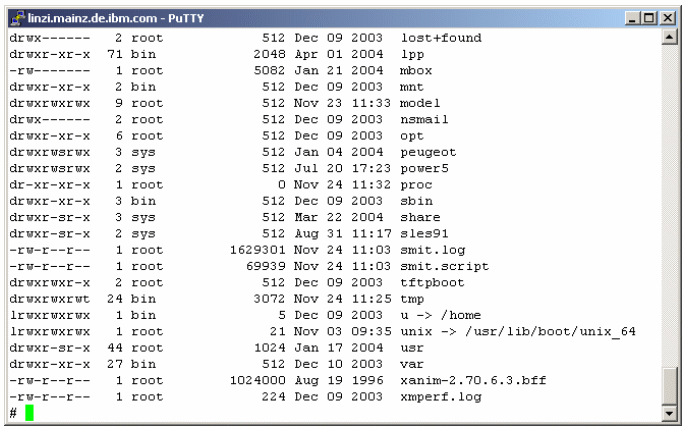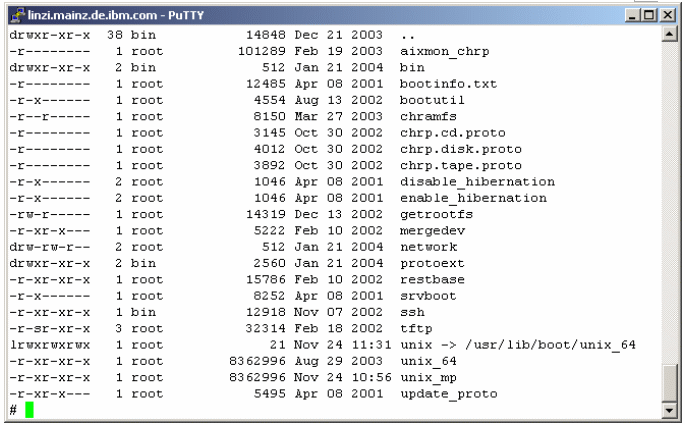The following requirements are common to all operating systems supported by Version 5. System unit and graphic requirements are platform specific and are detailed in the topics that follow:
Disk drive: an internal or external disk drive (minimum recommended size : 4 GB) is required to store program executables, program data, usage environment and paging space.
Memory: 256 MB of RAM is the minimum recommended amount of memory for all applications. 512 MB of RAM is recommended for DMU applications on large assemblies (and for the CATIA - Digitized Shape Editor 2 (DSE) product). Requirements may be greater when large amounts of data are used.
Internal/external drives: a CD-ROM drive is required for program installation and access to the online documentation, which can optionally be downloaded to disk.
Display: A graphic color display, compatible with the selected platform-specific graphic adapter. The minimum recommended size for usability reasons is 17 inches. The minimum resolution required for Windows workstations is 1024 x 768, and 1280 x 1024 on UNIX workstations. Changing the resolution during a session is not supported. You first have to exit the current session, change the resolution then restart the session, otherwise the result is unpredictable.
When selecting a graphic adapter, hardware texturing capability is strongly recommended when using Version 5 products that use texture mapping, in which case the amount of RAM has to be adequate for the number and complexity of textures to be used.
Note about NVIDIA graphic adapters: for normal CATIA V5 usage on NVIDIA graphic adapters with less than 128 MB of memory, a resolution of 1280*1024 is recommended for NVIDIA drivers 71.84 and 77.56, and at a resolution of 1600*1200 certain .tif images whose size exceeds 4096*4096 pixels require the NVIDIA driver 81.69.
Keyboard: a specific keyboard compatible with selected installation locale may be required for national language support.
Pointing device: 3-button mouse. On Windows workstations, a 2-button mouse may alternatively be used (the third button is emulated with a keyboard sequence). The 3-button mouse is recommended for usability reasons. The IntelliMouse (two buttons plus wheel) is an alternative to the three-button mouse on Windows workstations, the wheel acting as the middle button and allowing additional manipulations such as panning and scrolling.
Optional components and features
SpaceBall and SpaceMouse can be used, in addition to the mouse, to perform graphic manipulations (zoom, pan, rotate, etc.). The necessary drivers are delivered with the device.
These devices can be used with CATIA - DMU NAVIGATOR 1 (DN1), CATIA - DMU SPACE ANALYSIS (SP1) and all CATIA P2 Products.
The robustness of the overall solution is dependant on the robustness of the operating system and the hardware environment used. Windows and UNIX hardware configurations certified by Dassault Systemes for running products are published at:
http://www.ibm.com/solutions/plm
Although products might run on other configurations or other graphic adapters, incidents specific to these configurations or adapters would not be accepted for support.
The Version 5 infrastructure detects if your computer is equipped with multiple processors, and provides multi-threaded graphics support on the AIX and Solaris platforms to enhance visualization performance. The Version 5 infrastructure supports in multithread mode up to 16 graphics adapters and 32 CPUs.
Intel Pentium III or Pentium 4-based workstations running Windows2000 Professional Edition, or Windows XP Professional Edition.
An active LAN adapter (Ethernet or Token Ring, installed and configured) is required for licensing purposes.
An OpenGL-capable graphic adapter is required. Note that graphic performance on local transformations (panning, zooming, rotating model) will depend on the selected graphic adapter. This graphic adapter should have the following capabilities:
Dassault Systemes introduced significant functionality for CATIA and ENOVIA users by enabling the 64-bit architecture capabilities for AIX 5L.
A 32-bit application can only address a theoretical maximum of 4 GB of memory. Most operating systems can use an addressable amount of memory less than 4 GB, typically 2 to 3 GB. The system memory will be limited my reservation of operating system functions and the running application. For CATIA, the theoretical maximum memory was 3 GB, in practice a user had 2.5 GB for productive usage.
The AIX 5L operating system is a true 64-bit operating environment supported by IBM's pSeries and IntelliStation POWER hardware platforms. Dassault Systemes' ENOVIA DMU Review 2 Configuration, for example, can now access the full 64-bit range of up to 8 TB (Terrabyte) of real addressable memory when used on IBM 64-bit platforms, or virtual memory can be used to expand the capacity up to 1 YB (Yottabyte).
With larger addressable memory space, the ENOVIA DMU Navigator can:
To enable the AIX 5L 64-bit environment, execute the following steps.
To check if the environment is well prepared to enable 64-bit application support, run the following commands to ensure the following system kernels are available on the system:
cd /usr/lib/boot
ls -al
The unix_64 file should be listed. If so, the system can be switched to enable 64-bit operating support.
If the link UNIX points to:
/usr/lib/boot/unix_64
in the / and in /usr/lib/boot, the system is already running in 64-bit mode.
Execute the following as root:
bootinfo -K
or:
bootinfo -y
The return information should be:
32
for a 32-bit environment, or:
64
for a 64-bit environment.
To switch kernels, perform the following steps:
cd / ln -fs
/usr/lib/boot/unix_64 unix

cd /usr/lib/boot ln -fs
/usr/lib/boot/unix_64 unix

bosboot -ad
/dev/ipldevice

sync; sync; sync
shutdown -Fr
Once the system is rebooted, verify that the 64-bit kernel is running.
To reactivate the 32-bit environment, execute the previous commands on the original files, create a new kernel and reboot the system.
Pentium III or Pentium 4-based workstations running Microsoft Windows XP Professional Edition.
A graphic adapter with a 3D OpenGL accelerator is required. Note that graphic performance on viewing functions (panning, zooming, rotating) will depend on the selected graphic adapter. The graphic adapter should have the following capabilities:
An active LAN adapter (Ethernet or Token Ring, installed and configured) is required for licensing purposes.
An updated list of hardware configurations, certified at Dassault Systemes for running Version 5 products, is published on the V5 Web site at URL:
http://www.ibm.com/solutions/plm
Disk drive: 2.5 GB.
Memory: 4GB at minimum level is the recommended amount of memory.
System Unit: Intel Xeon EM64T, AMD Opteron 64-bit based workstations running Windows XP Professional x64 Edition.
Supported Configurations on Windows XP Professional x64 Edition:
An updated list of hardware configurations, certified at Dassault Systemes for
running CATIA Version 5 products, is published on the CATIA V5 Web site at URL:
http://www.ibm.com/solutions/plm/
Power2 or Power3 or Power4 processor families, supported on AIX Version 5.2, provided that requirements described below are met.
Note: From Release 16 onwards, AIX 5.1 is no longer supported.
One of the following graphic adapters is required:
Any B-Class, C-Class or J-Class workstation supported on HP-UX Version 11.11 (HP-UX 11i), provided that requirements described below are met.
One of the following graphic adapters is required:
any Ultra1, Ultra2, Ultra10, Ultra30, Ultra60, SUN Blade 100, SUN Blade 150, SUN Blade 1000, SUN Blade 1500, SUN Blade 2000 or SUN Blade 2500 or SUN Blade 1500+ (1.5GHz) workstation based on UltraSPARC processor, supported on Solaris 8, provided that requirements described below are met.
One of the following graphic adapters is required: